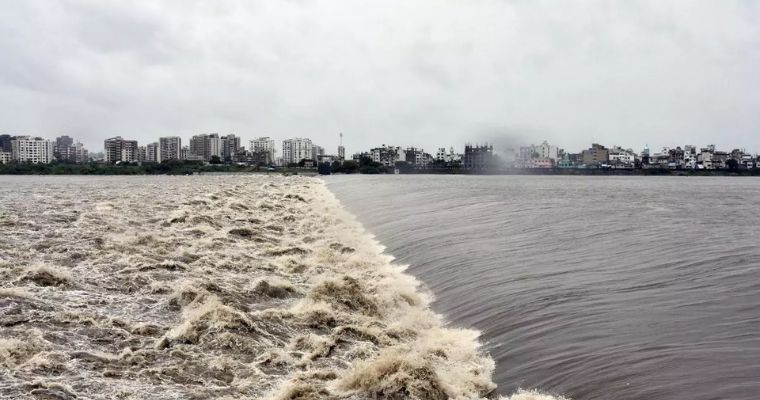
Heavy rains have wreaked havoc in many districts of Gujarat, leading to casualties and throwing life out of gear. The intense downpour over the past 48 hours has resulted in flash floods and waterlogging in numerous areas. Due to the rising water level in the Sardar Sarovar Dam, authorities were forced to release 4 lakh cusecs of water into the Narmada river, prompting the evacuation of around 280 people residing in low-lying areas of Bharuch to safer locations.
The most affected districts include Banaskantha, Sabarkantha, Ahmedabad, Aravalli, Kheda, Ahmedabad, Anand, Panchmahal, Dahod, Mahisagar, Vadodara, Chhota Udepur, Dang, Tapi, Surat, Narmada, Bharuch, Navsari, and Valsad.
The deep depression over North Gujarat is expected to move slowly in a West Southwest direction across the Gujarat region, reaching the Saurashtra and Kutch coast and adjoining areas of Pakistan and the northeast Arabian Sea by the morning of August 29. Consequently, heavy to very heavy rainfall is anticipated to continue over Saurashtra and Kutch for another 24 hours. However, the rain intensity is expected to decrease in the Eastern districts of Gujarat by the evening of August 27.
Rajkot recorded an exceptionally heavy downpour of 318 mm, while Ahmedabad received 138 mm. Naliya and Dwarka experienced 105 mm each, followed by Porbandar with 63 mm, Okha with 98 mm, Kandla with 78 mm, and Surat with 47 mm.
This spell of intense rainfall is likely to be the last significant one for Gujarat in August. The monsoon season typically begins retreating from the Western parts of Rajasthan around September 17. No significant weather activity is expected over Gujarat after August 29 for at least a week. The reduction in rainfall will undoubtedly aid in the receding of floodwaters.
Image Courtesy: The Hindu Business Line


